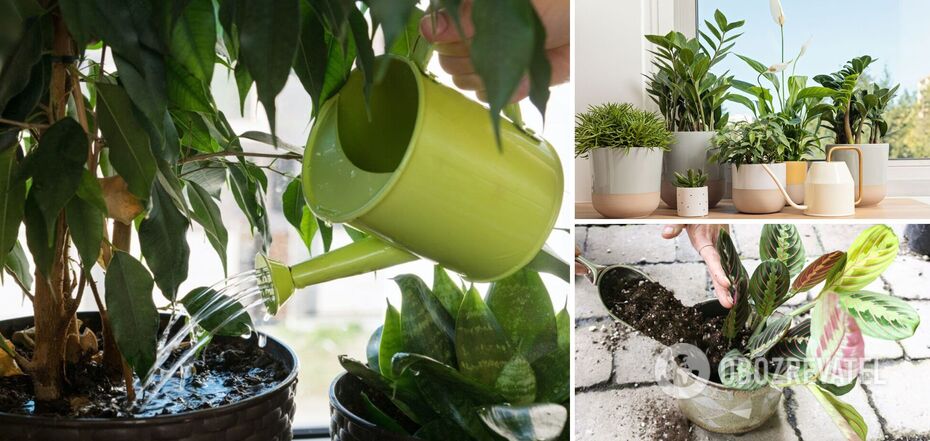Life
How to know when it's time to water a houseplant: simple tips about complexity
Tips for watering your houseplants sometimes don't work. You seem to be doing everything according to the instructions, but the plant feels bad. People who are well versed in plant biology say that this task is actually more complicated than adding water on a schedule, because it depends on several factors at the same time.
The House Plant Journal blog argues that you should not be guided by wording such as "whenever the plant needs it", "when the top 2 centimetres of soil is dry", "when the soil is completely dry" and (the worst advice) "once a week / 10 days / month". In reality, the factors that need to be considered are light, temperature, humidity, soil, pot and plant condition.
Light
The photosynthetic reaction that keeps a plant alive requires sunlight in the first place. There are also phytolamps that simulate its range and have a great effect on all active processes. But water is also involved in photosynthesis. So the rule is simple: the more light a plant receives, the more water it needs. In the summer, in clear weather and for flowerpots standing in the sun, abundant watering is required. In winter, in bad weather and for plants growing in the shade, less water is enough.
Temperature
The process of evaporation of water from the surface of the soil and the leaves of a plant is called transpiration. The higher the temperature, the faster this process takes place, which means that you need to water the flowerpots more often. So, absolutely all plants need more water and more frequent watering in summer. And also on warm days at other times of the year. In addition, those pots that are closer to heating appliances and in warm rooms, such as the kitchen, need to be watered more often.
Air humidity
This factor also affects transpiration. With high humidity, it slows down significantly. Up to a complete stop, when there is a lot of water vapour in the air. Therefore, in humid rooms, keep a close eye on the condition of the plants - you may want to stop watering them until the conditions change, as they absorb enough water directly from the air.
Soil
Typically, soil for indoor plants contains peat, which retains water, fine sand and perlite, which removes water, and vermiculite, which performs both functions simultaneously. Mixing these components in different proportions allows you to optimise the growing medium for the plant's moisture requirements. If the plant requires a large amount of water, it is better to plant it in a soil mixture with peat as the main component. Whereas cacti and succulents thrive in sand, which holds almost no water at all. In addition, over time, the soil under the plant becomes compacted, and its water-holding capacity decreases. Therefore, plants that you haven't repotted for a long time or where the soil hasn't been loosened need to be watered more often.
Pot
Most plant pots are of two types - clay and plastic. Plastic ones retain moisture better, which is why they are so good for seedlings. While clay pots are breathable, simultaneously giving the roots access to additional air and letting some moisture out, which is good for adult plants, but also requires more frequent moistening of the soil. And one more nuance - the larger the pot, the more water the soil can hold, which also affects the frequency of watering.
Plant condition
Different plants naturally have different capacities to store or release water. It is closely related to the natural conditions from which each particular plant comes. So pay attention to the condition of its leaves and stems and adjust your watering to make it feel and look as good as possible. This way, you will intuitively build an optimal watering schedule for each of your green pets.
Previously OBOZREVATEL told about the plants that are so unpretentious to watering that they will survive even the laziest owners.
Only verified information is available in our Obozrevatel Telegram channel and Viber. Do not fall for fakes!



























